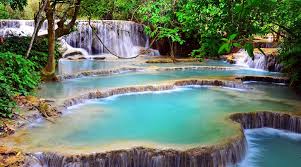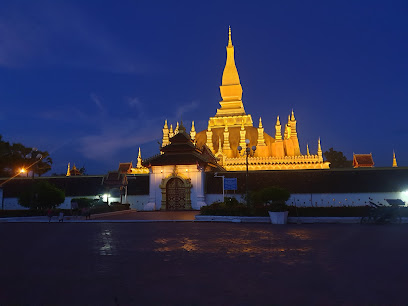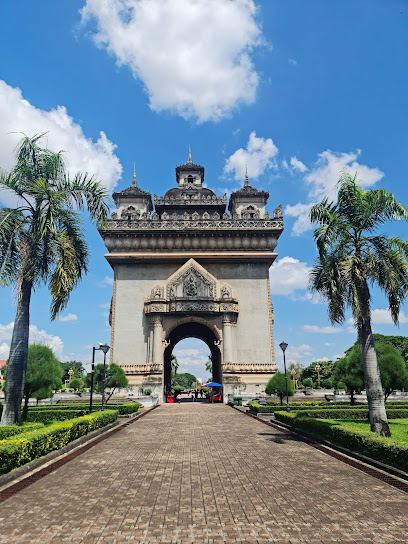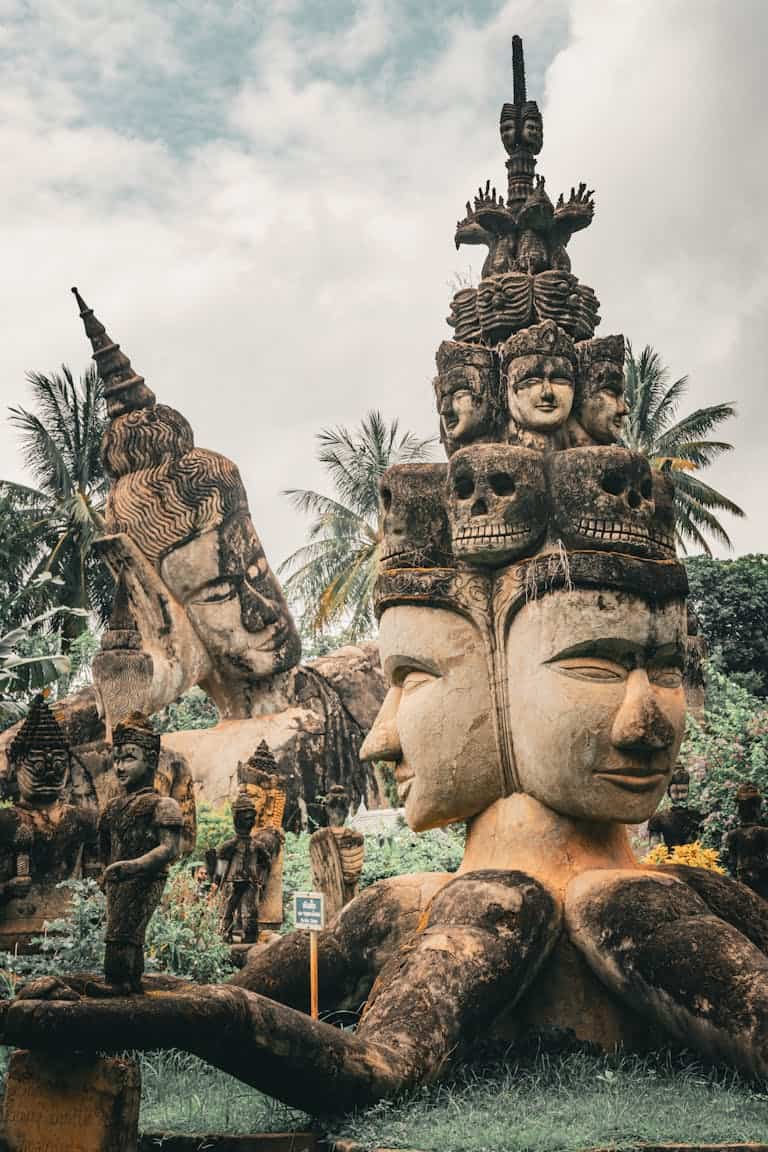Backpacking Laos 2025: Ultimate Southeast Asian Gem
Nomadic Southeast Asia contains affiliate links and is a member of the Amazon Services LLC Associates Program. If you make a purchase using one of these Amazon links, I may receive compensation at no extra cost to you. See my Disclosure Policy for more information.

Listen, I’ve been around the five boroughs. I’ve done omakase at a counter in the East Village where the fish cost more than my rent in the early 2000s.
I chased a psychedelic experience from a chocolate bar in Bushwick, and had my mind blown by a halal cart guy who could teach Daniel Boulud a thing or two about umami.
But Laos? Laos is that unassuming storefront in Flushing, tucked between the flashy hot pot spots and the bubble tea lines. No neon sign, no influencer queue snaking down the block.
While everyone’s elbowing each other for a shot of the cronut or getting their wallet lifted in Times Square, Laos just sits there, patient as the old men playing chess in Washington Square Park, waiting for you to discover what the neighborhood has known all along: this place will change you.
Key Takeaways
- Laos is Southeast Asia’s last authentic frontier – while Thailand and Vietnam are overrun with tourists, Laos offers genuine cultural experiences without the crowds
- Your money goes impossibly far – live comfortably on $25-40/day including accommodation, incredible street food, and activities
- Vang Vieng and 4,000 Islands are adventure paradise – from tubing limestone karst rivers to cycling through Mekong deltas, outdoor thrills are everywhere
- The food scene is criminally underrated – larb, tam mak hoong, and khao piak sen will ruin you for generic Asian fusion forever
- Digital nomads can thrive here – reliable WiFi in cities, $200-400/month rent, and endless inspiration make it perfect for remote work
Why Laos Will Ruin You for Other Places?
Picture this: you’re sitting riverside in Vientiane, (which, by the way, is criminally underrated), watching monks in saffron robes collect their morning alms while the Mekong flows past like it’s got all the time in the world. In your hands is the reason you truly understand: a cup of rich, dark café Lao.
The first sip is earthy and profound, a taste born in the misty highlands of the Bolaven Plateau. It’s a brew that doesn’t rush. It’s meant to be savored, a slow extraction that forces you to pause. Because here’s the thing about Laos—time moves differently. Not slower, just… better.
And this coffee is the proof. It’s not a hurried espresso shot gulped down on the run; it’s a ritual. It’s the gentle drip of the sinot filter, a tiny metal phoenix perched on your glass, taking its sweet time to transform dark roast and chicory into liquid patience.
It’s the thick, sweet café nom yen—iced with condensed milk—that makes the tropical heat not just bearable, but beautiful.
This is the pace of Laos, served in a glass. It’s the taste of a place that knows some things—like the river, the sun, and a perfect cup of coffee—can’t, and shouldn’t, be rushed.
The country doesn’t assault you with neon signs or tuk-tuk drivers screaming prices in your face. Instead, it whispers!
It seduces you with the smell of lemongrass and galangal wafting from some grandmother’s kitchen, where she’s been perfecting her larb recipe since Nixon was in office.
What makes Laos special?
- The people actually smile at you without immediately trying to sell you something.
- Street food that costs less than your morning coffee but delivers more soul.
- Landscapes that look like they were painted by someone on a really good acid trip.
- Buddhist temples where you can actually meditate without dodging selfie sticks.
Vang Vieng: Where Adventure Goes to Get Its Groove Back
Remember when Vang Vieng was just a place where gap-year kids went to get obliterated on buckets of whiskey while floating down a river? Well, those days are mostly behind us, and what’s emerged is something far more interesting.
Sure, you can still tube the Nam Song River—and you absolutely should—but now you’re doing it surrounded by limestone karsts that jut out of the earth like the vertebrae of some ancient dragon.
The water’s cold enough to shock you back to your senses, and the scenery is so ridiculous you’ll think someone’s messing with the saturation settings on reality.
What to do in Vang Vieng?
- Hit the river at sunrise when the mist is still hanging low
- Explore caves that feel like nature’s cathedrals
- Rock climb on formations that have been there since before humans figured out fire
- Eat at riverside joints where the owners remember your name after one visit
But here’s the real magic: hire a local guide. Not because you need directions, but because these folks know where the best swimming holes are, which caves have the most spectacular formations, and more importantly, they’ll share stories that no guidebook will ever tell you.
The 4,000 Islands: Where Time Goes to Die (In the Best Way)
Si Phan Don—the 4,000 Islands—is where Laos shows off. Not in a flashy way, but like a master chef who plates something simple and perfect and just nods, knowing you’re about to have your mind blown.
This is the Mekong at its most magnificent, spreading out into a delta so wide and lazy that you’ll forget what rush hour feels like. The islands are connected by rickety bridges and populated by people who fish the same spots their grandfathers did, using techniques that haven’t changed in centuries.
Rent a bicycle—seriously, do it—and spend your day cycling between islands, stopping at whatever catches your eye. A woman selling grilled fish by the roadside. A temple where the monks are actually happy to chat.
A waterfall where you can swim without fighting crowds for a photo.
Island hopping essentials:
- Don Khon and Don Det are the main tourist hubs, but don’t sleep on the smaller islands
- Try the Mekong fish curry—it’s a religious experience
- Watch the sunset from any pier. Trust me on this one.
- Bring books. Lots of books. You’ll have time.
The Art of Eating Your Way Through Laos
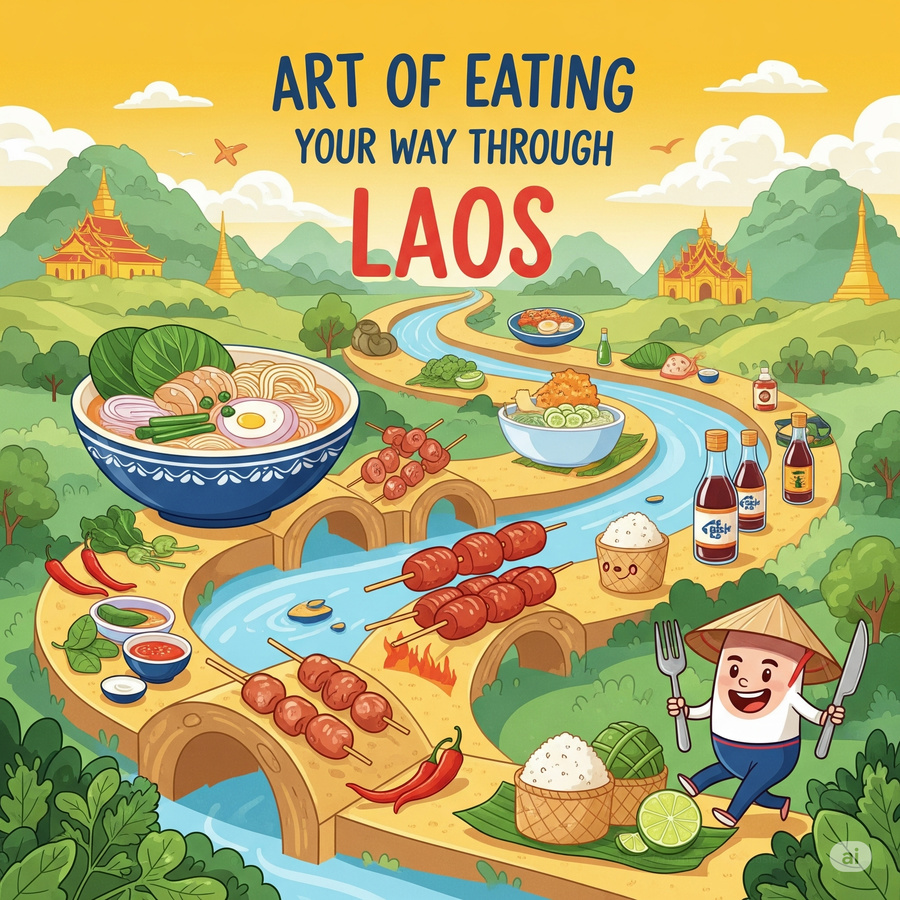
Let’s talk about the food, because this is where Laos really flexes. Lao cuisine is like that friend who’s incredibly talented but doesn’t feel the need to brag about it.
It’s influenced by Thai, Vietnamese, and Chinese traditions, but it’s got its own personality—one that’s more interested in harmony than heat.
Street food that’ll change your life:
- Larb: The national dish, basically a meat salad that manages to be both healthy and deeply satisfying
- Tam mak hoong: Papaya salad that balances sweet, sour, spicy, and salty like a tightrope walker
- Khao piak sen: Rice noodle soup that’s comfort in a bowl, usually served at sunrise to cure whatever ailed you the night before
- Or lam: A stew that varies by region but always delivers on complexity and soul
The secret sauce? Eat where the locals eat.
Those plastic stools on the sidewalk aren’t charming décor—they’re your ticket to the real deal. And don’t worry about the hygiene; your stomach will adapt faster than you think, and the payoff is worth the initial adjustment period.
Budget Travel That Doesn’t Feel Like Punishment
Here’s the beautiful truth about Laos: you can live like a king on a pauper’s budget. I’m talking $20-30 a day, including accommodation, food, and transportation.
Compare that to what you’d spend on a mediocre lunch in most Western cities.
Daily budget breakdown (my estimation):
- Guesthouse bed: $5-15 (and many come with breakfast)
- Street food feast: $5-8 (multiple meals)
- Local transport: $2-5 (buses, tuk-tuks, boat rides)
- Activities: $5-10 (temple visits, cave exploration, river activities)
The key is embracing the local pace. Stay in family-run guesthouses where the owner’s grandmother might teach you to make sticky rice. Eat at markets where vendors take pride in their craft.
Take local buses where you’ll end up in conversations with teachers, farmers, and fellow travelers who’ve all discovered this beautiful secret.
Your 12-Day Laos Love 💖 Affair
Let me map out something for you—not because you need to follow it religiously, but because sometimes it helps to have a framework before you throw it out the window and follow your instincts.
Days 1-2: Vientiane
Start slow. Adjust to the pace. Visit That Luang at sunset, wander the night market, drink coffee that rivals anything in Paris.
Days 3-5: Vang Vieng
Get your adventure fix. Tube the river, explore caves, climb rocks, eat by the water until your heart is full.
Days 6-9: Luang Prabang
This UNESCO World Heritage site is where French colonial architecture meets Buddhist temples. Wake up early for the alms ceremony, but be respectful—it’s not a tourist show.
Days 10-12: 4,000 Islands
End with tranquility. Cycle, swim, eat fish, watch the world go by at Mekong speed.
The Gear That Actually Matters
Forget the 47-pocket tactical pants and the water purification tablets that make everything taste like chlorine. Here’s what you actually need:
The essentials:
- A backpack that doesn’t scream “tourist” (locals appreciate subtlety)
- Quick-dry clothes (humidity is real, friends)
- Good walking shoes that can handle wet rocks
- A sarong (doubles as towel, blanket, temple cover-up)
- Mosquito repellent with DEET (dengue isn’t a souvenir you want)
- A sense of humor and an empty stomach
Going Digital Nomad in Paradise
Here’s where it gets interesting for my fellow laptop warriors aka Digital Nomads Laos. might not have Malaysia-level internet speeds, but it’s got something more valuable: inspiration at every turn and a cost of living that lets you actually enjoy the nomad life instead of constantly stressing about money.
Vientiane and Luang Prabang have decent Wi-Fi in cafés that serve excellent coffee for $1.
You can rent a comfortable room for $200-400 a month. And when you need to decompress from work, you’ve got the entire country as your playground.
Digital nomad Laos survival tips:
- Download offline maps before heading to rural areas.
- Bring a portable charger—power can be spotty.
- Learn basic Lao phrases (it opens doors, literally).
- Respect the culture—this isn’t your personal playground.
The Real Reasons to Visit Laos Now

Tourism is coming to Laos, slowly but surely and Chinese investment is changing the landscape. In five years, ten years, this place won’t be the same.
I’m not saying it’ll be ruined—cultures adapt, evolve, survive. But there’s something about Laos right now, in 2025, that feels like a moment in time. Like sitting in a jazz club in 1950s New York or walking through Prague before the Wall came down.
The monks still walk their morning routes. The fishermen still cast their nets at dawn. The grandmothers still argue over which vendor has the best sticky rice.
These rhythms of daily life that make Laos magical—they’re still here, still authentic, still willing to let you be part of the story.
The Hard Truth About Paradise
Look, I’m not going to lie to you. Laos isn’t always easy. The roads can be brutal. The language barrier is real. Sometimes the power goes out right when you need to submit that important project.
But here’s what I’ve learned from my travels: the places that change you are never the easy ones. They’re the ones that strip away your preconceptions, challenge your assumptions, and show you parts of yourself you never knew existed.
Laos does that!
It takes your Western obsession with efficiency and shows you the beauty of taking time. It takes your Instagram-fueled need for constant stimulation and teaches you to appreciate subtlety. It takes your travel checklist and replaces it with genuine curiosity.
Your Next Move
So here’s my advice: book the ticket. Pack light. Leave your expectations at home. Show up in Laos ready to be surprised, ready to be challenged, ready to fall in love with a place that doesn’t particularly care if you fall in love with it or not.
Because that’s the thing about the best destinations—they’re not performing for you. They’re just being themselves, beautifully, authentically, unapologetically.
And if you’re paying attention, if you’re really there, you might just discover that in watching them be themselves, you learn how to be yourself too.
The Mekong will still be flowing long after we’re all gone.
The question is: do you want to sit beside it for a while and listen to what it has to say?
Frequently Asked Questions
Is Laos safe for solo travelers in 2025?
Yes, Laos is extremely safe for solo backpackers and female travelers. Crime rates are low, locals are genuinely helpful, and violent crime against tourists is rare. Use standard travel precautions: don’t flash expensive items, trust your instincts, and avoid walking alone late at night in unfamiliar areas. Solo female travelers consistently rank Laos among the safest Southeast Asian destinations.
What is the internet speed like in Laos for digital nomads and remote work?
Internet connectivity in Laos varies significantly by location. Major cities like Vientiane and Luang Prabang offer reliable WiFi (10-50 Mbps) in cafes, co-working spaces, and accommodations suitable for video calls and file uploads. Rural areas and smaller towns have limited connectivity. Digital nomads should plan accordingly and consider purchasing local SIM cards for mobile data backup.
Do I need a visa to visit Laos? What are the current visa requirements for 2025?
Most nationalities can obtain a Laos tourist visa on arrival at international airports and land borders. The standard 30-day tourist visa costs approximately $30-42 USD depending on nationality. Requirements include: valid passport (6+ months remaining), completed application form, passport photo, and cash payment in USD. Some nationalities qualify for visa-free entry for shorter stays. Check current requirements before travel as policies can change.
When is the best time to visit Laos? What’s the ideal season for backpacking?
The optimal time for backpacking Laos is during the cool, dry season from November to March when temperatures are comfortable (20-25°C) and rainfall is minimal. April-May can be extremely hot (35°C+), while June-October is monsoon season with heavy rains and flooding risks. However, each season offers unique experiences: green landscapes during rainy season, fewer crowds in hot season, and perfect weather during peak season.
How much does backpacking in Laos cost per day? What’s a realistic daily budget?
Backpacking Laos is extremely budget-friendly. Daily estimated costs breakdown:
Budget travelers: $20-30/day (dorm beds, street food, local transport)
Mid-range travelers: $40-60/day (private rooms, restaurant meals, organized activities)-
Luxury backpackers: $80+/day (nice hotels, guided tours, comfortable transport) Accommodation: $5-15/night for guesthouses, $15-30 for hotels Food: $3-8/day eating local, $10-15 including restaurants Transport: $2-10/day for local buses and tuk-tuks

